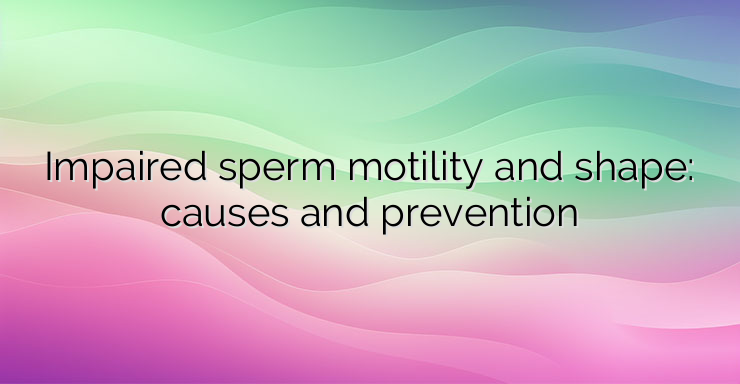Oligoasthenoteratozoospermia is a quantitative and qualitative disorder of the seminal fluid, which has a direct impact on the chances of fertilization. Various tests are needed to diagnose this disorder in the quality and quantity of seminal fluid. It is of prime importance to assess the quality: this is done through a spermogram, which allows to determine both the motility and the quantity of the spermatozoa. When their concentration is less than 15 million per milliliter, then oligospermia is observed. The assessment of sperm motility is also very important – the prefix “astheno” means asthenia – fatigue. What are the causes of oligoasthenoteratozoospermia? The causes of this condition are the same as those that lead to infertility in men. These are, for example: Exposure to chemical substances that disrupt the functions of the endocrine glands – these substances are contained in plastic, numerous cosmetic products, household preparations and others; Smoking; Alcohol consumption; Wearing tight pants that prevent the cooling of the testicles, since the normal course of spermatogenesis requires a temperature lower than body temperature; Venous malformations – eg varicocele; Small size of the testicles; Chromosomal abnormalities; Genetic mutations; Exposure to oxidative stress. How to deal with oligoasthenoteratozoospermia? The treatment of this condition depends on the causes and individual characteristics. If the causes are reversible and their impact can be prevented or reduced, semen quality usually improves after 6 to 8 months. However, depending on the severity of oligoasthenoteratozoospermia, different therapeutic approaches can be applied. An important element is the improvement of the quality of the seminal fluid through the intake of antioxidants – vitamin C, vitamin E and glutathione, which favor the increase in the number and mobility of spermatozoa due to the reduction of oxidative stress. In addition, certain lifestyle changes can also improve the processes of sperm formation – spermatogenesis. These are: Stopping or reducing the use of alcohol, Quitting smoking; Limiting caffeine intake; Regular physical activity; A healthy and balanced diet. When treatment is not sufficiently effective or possible, pregnancy planning can also be done by other methods. In cases where oligoasthenoteratozoospermia disrupts natural fertilization, it is necessary to resort to assisted reproduction methods. References: https://www.parents.fr/envie-de-bebe/infertilite/troubles-de-la-fertilite/oligo-astheno-teratozoospermie-oat-definition-et-impact-sur-la-procreation-945464


Leave a Reply